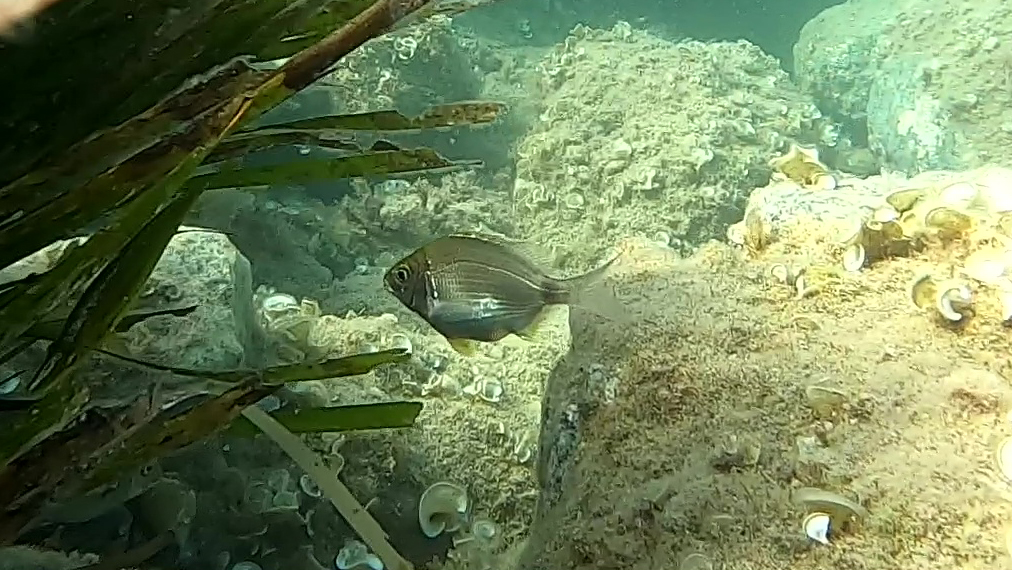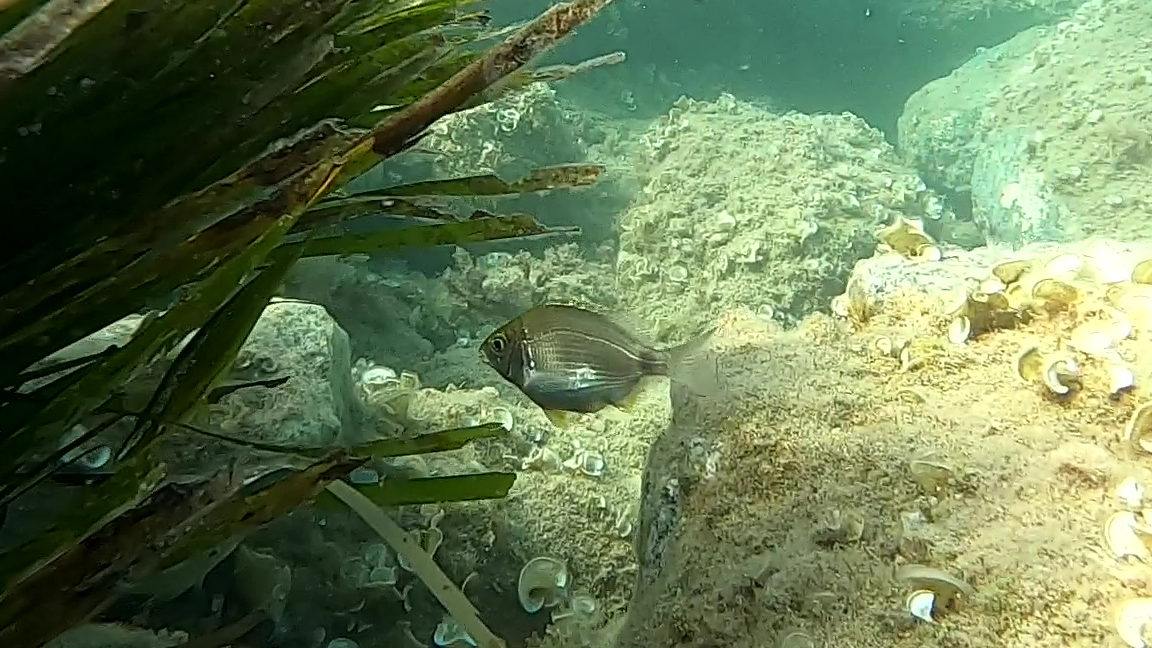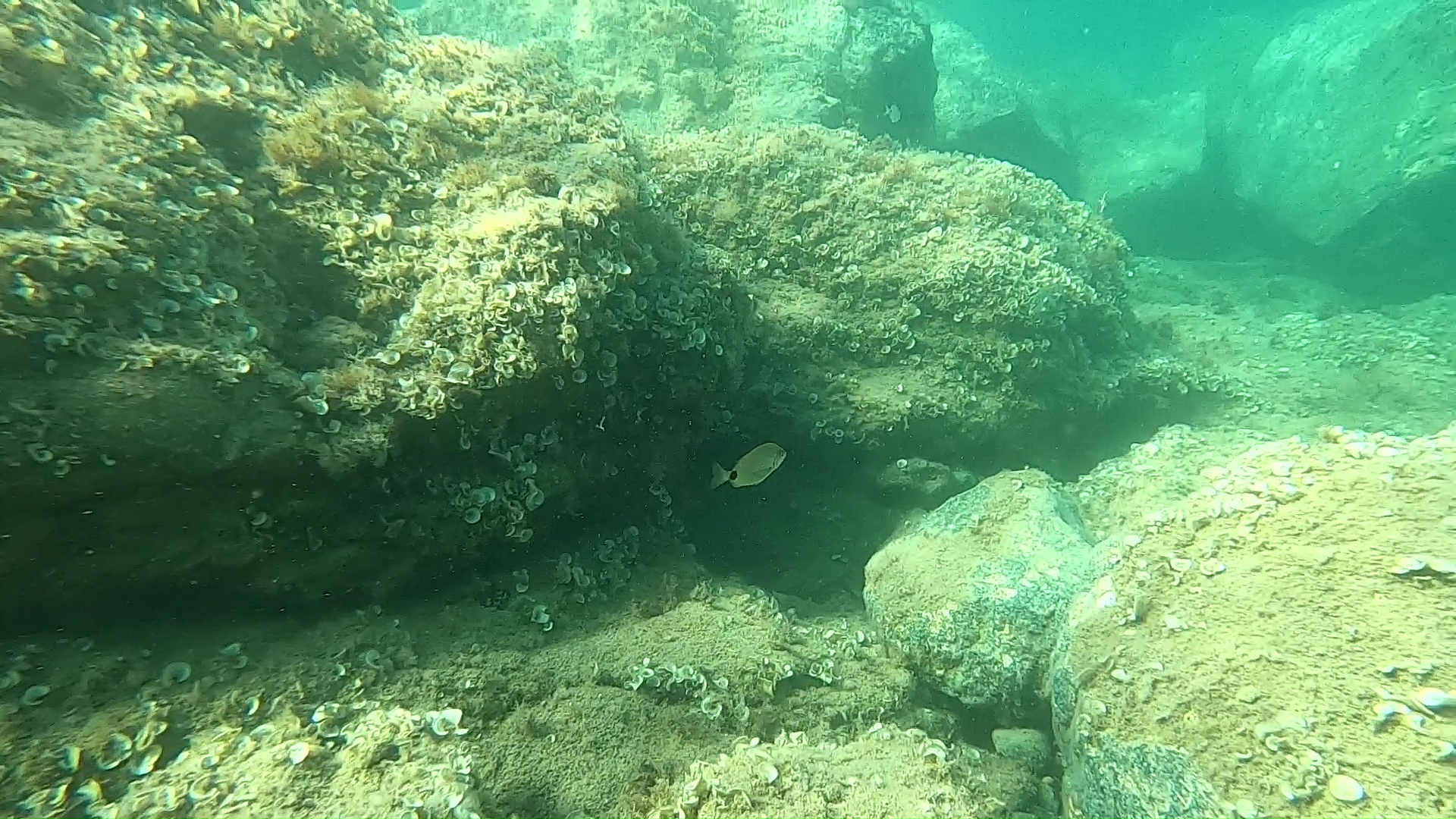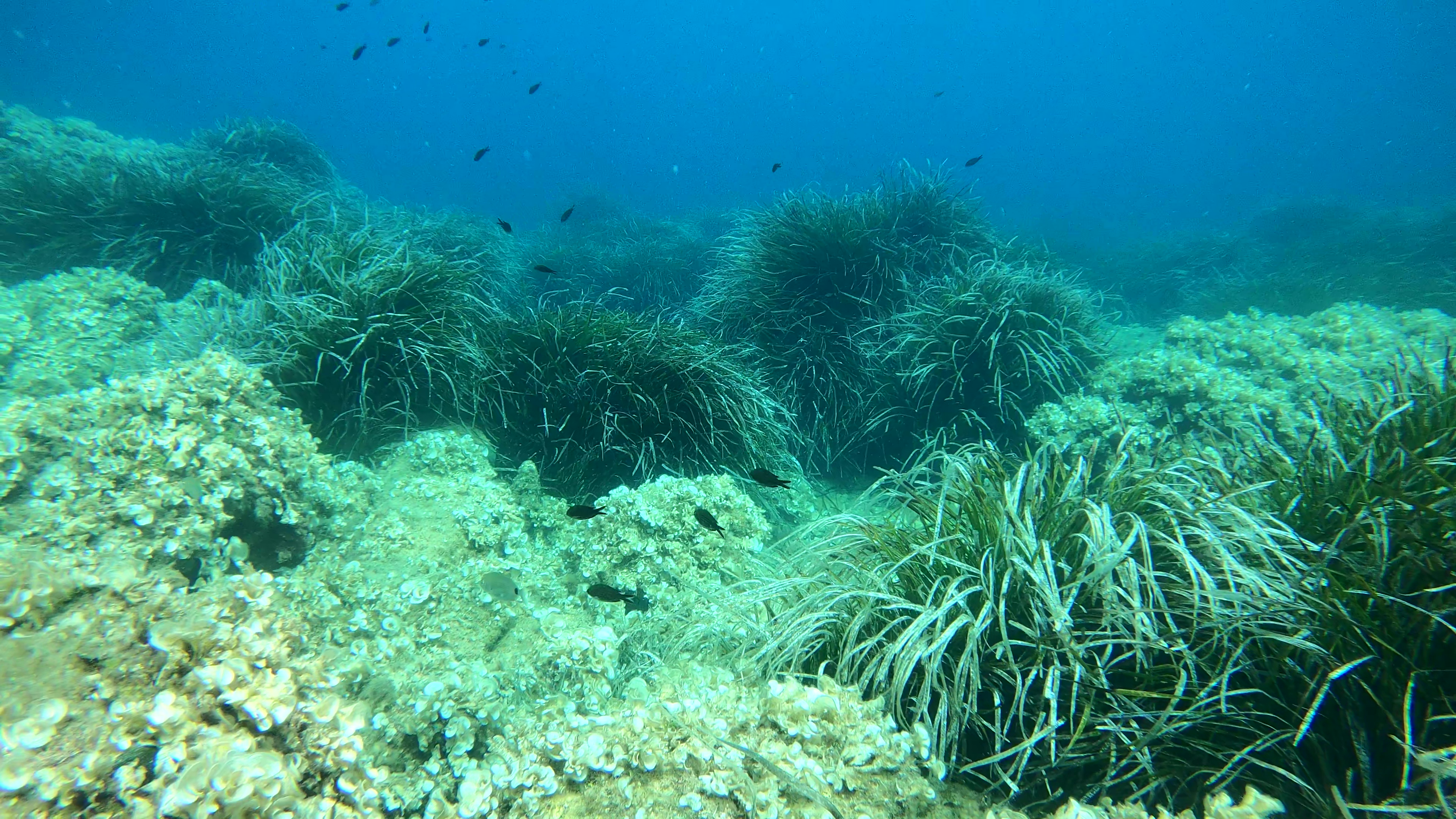Sarago sparaglione - Diplodus annularis
It is the smallest Sea bream present in our seas and perhaps not at home its ideal habitat is the Posidonia oceanica prairie where this species finds refuge from predators and food. With the scuba it was almost impossible to get close to this fish to do some decent shooting, on the contrary in apnea we managed to get close to Annular sea bream without any problems. Sarago sparaglione Diplodus annularis Annular sea bream intotheblue.it

Annular sea bream is a fairly common bream in our coasts as long as it is on a rocky bottom where the Posidonia oceanica is present. This species is very shy and suspicious and at the slightest sign of danger it runs away by hiding in the Posidonia.
This Sea bream (Diplodus annularis Linnaeus, 1758) is a fish belonging to the Sparidae family, widespread in the Mediterranean and Black seas.

Description
It is the smallest of all bream: it hardly exceeds 20-25 centimeters in length.
It is easily recognizable by its silver-gray livery with yellowish shades and by the yellow ventral fins. The black spot on the caudal peduncle extends to the lower edge.
Biology
It is a gregarious fish in the juvenile stages while as an adult it usually avoids the specimens of the same species, but it easily aggregates to other species of bream, wrasse and serranids.

Diet
It feeds on both algae and nematodes, molluscs, small crustaceans and echinoderms.
Reproduction
It is a protandric hermaphrodite species, that is, it develops male characters in the early stages of life and female characters in the more advanced stages. The breeding season is variable: January-March in the eastern Mediterranean, April-June in the western Mediterranean, May-August in the upper Adriatic and July-September in the Black Sea.

Distribution and habitat
The species is common throughout the Mediterranean basin and in the Black Sea and is present but less common also in the coastal strips and in the islands of the eastern Atlantic from the Gulf of Biscay to Morocco. It is ubiquitous, in fact it can be found both on rocky or sandy bottoms, preferring however the Posidonia oceanica and Zostera meadows. It is strictly coastal and is found at depths between 0 and 20 m (exceptionally up to 100 m).
https://it.wikipedia.org/wiki/Diplodus_annularis
https://en.wikipedia.org/wiki/Diplodus_annularis
https://www.intotheblue.it/2021/11/14/sparaglione/
